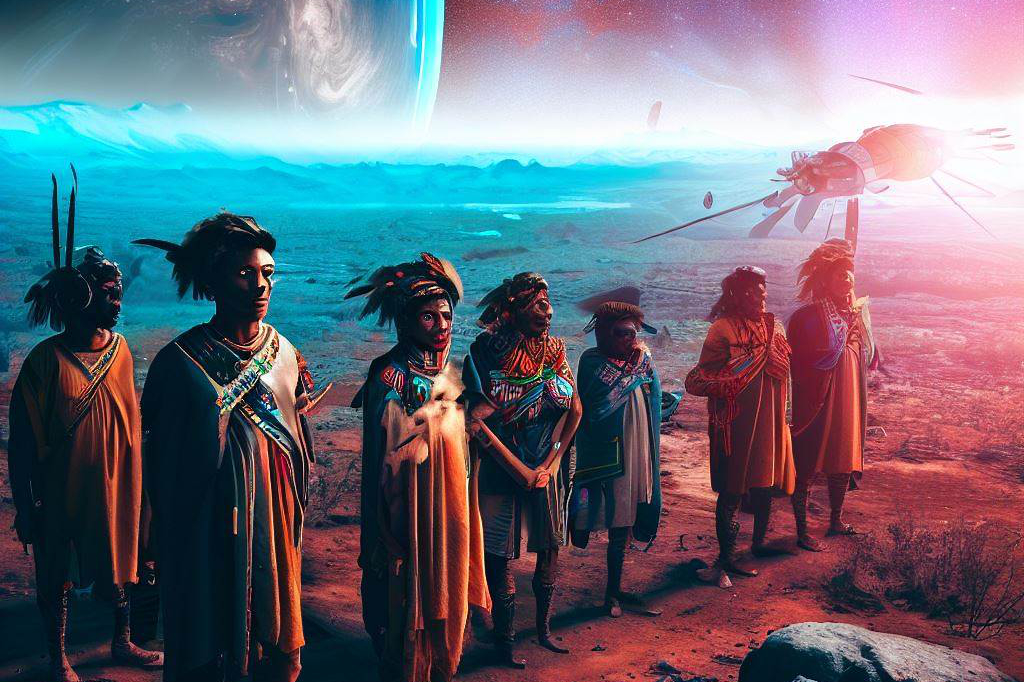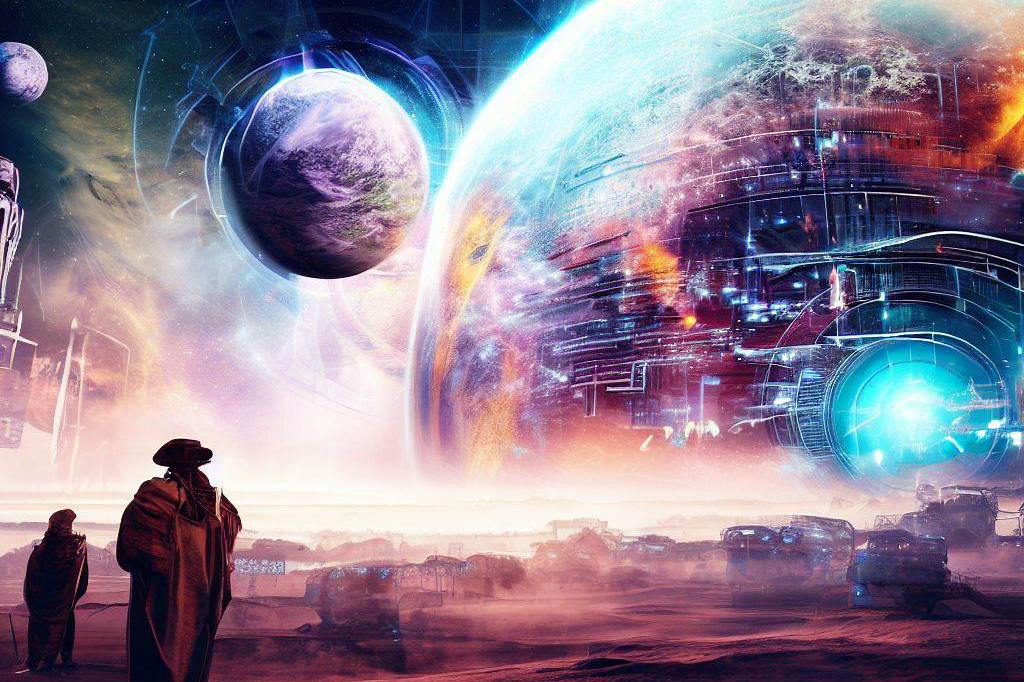The Final Frontier and Its Impact on Earth
Space exploration has been a fascination for humanity since the beginning of time. The desire to explore what lies beyond our planet has driven many advancements in science, technology, and engineering.
Since the launch of the first artificial satellite, Sputnik 1, in 1957 by the Soviet Union, space exploration has continued to expand at a rapid pace. With this expansion comes several questions regarding its impact on Earth.
From rocket launches to space debris, space exploration has left its mark on our planet. The amount of debris orbiting Earth continues to increase each year as more objects are sent into space.
These objects can pose a threat to both spacecraft and people on Earth. Additionally, rockets release harmful chemicals into the atmosphere during their launches, which can contribute to air pollution.
However, it’s not just physical harm that we need to consider when talking about space exploration’s impact on Earth. There are also social and cultural impacts that have yet to be fully understood or addressed.
Indigenous communities around the world are among those that have experienced significant changes due to space exploration activities in their areas. Therefore, it is imperative that we study and understand these impacts so we can address them appropriately – preserving both our environment and respecting those who live in it.
The Impact on Indigenous Communities

Space exploration has had a significant impact on indigenous communities around the world. Many of these communities have lived in harmony with their environments for centuries, and space exploration has disrupted their way of life in numerous ways.
Overview of Indigenous Communities Affected by Space Exploration
Indigenous communities whose land lies near or beneath space launch sites have been particularly affected by space exploration. One such example is the Kourou Indigenous Community in French Guiana.
This community lives in close proximity to the Guiana Space Centre, which has been launching rockets since 1968. As a result of the space center’s operations, the community’s traditional lands have been degraded, and they can no longer fish or hunt in nearby rivers due to contamination from rocket fuel.
In addition to launch sites, other areas impacted by space exploration include satellite ground stations built on indigenous lands and areas targeted for resource extraction to support space missions. These resources can include minerals used in rocket propulsion systems or materials needed for spacecraft construction.
Examples of How Space Exploration Has Impacted Their Way of Life, Culture, and Traditions
The impact of space exploration on indigenous communities extends beyond environmental degradation. It also affects their cultural practices and traditional knowledge systems. For instance, some indigenous communities may view certain areas as sacred sites that hold significant cultural meaning but may be destroyed or otherwise impacted by space activities.
Moreover, some aspects of their way of life may be disrupted due to restrictions on access to land or waterways resulting from safety concerns around rocket launches or satellite installations. The livelihoods of these communities may also be threatened if they traditionally rely on fishing or hunting but can no longer do so due to environmental contamination caused by launch activities.
The impact of space exploration on indigenous communities and their environment can be significant. A better understanding of these impacts is necessary to ensure that space exploration is conducted in a way that respects the rights of indigenous communities and their traditional knowledge systems while also advancing scientific research.
The Environmental Impact of Space Exploration

Space exploration has undoubtedly helped us learn more about our universe and Earth, but it has also had a significant impact on the environment. The consequences of space exploration can be felt across different aspects of environmentalism, such as
- pollution,
- deforestation,
- and habitat destruction.
Environmental Pollution
One of the biggest concerns associated with space exploration is environmental pollution. Rockets emit large amounts of pollutants into the atmosphere both during launch and while in operation.
The fuels used in rockets often contain harmful chemicals such as nitrogen oxides and carbon dioxide that contribute to greenhouse gases that are responsible for global warming. Pollution from space activities can also have an impact on air quality near launch sites.
In addition to releasing pollutants into the atmosphere, rockets emit noise pollution that can be disturbing to both wildlife and local residents. While there are regulations in place to monitor rocket emissions, there is still much work needed to mitigate their negative effects on the environment.
Deforestation

Spacecraft launches often require large tracts of land to ensure safety and efficiency. This has led to deforestation around launch sites in some areas across the world, including the Amazon rainforest in South America, which suffered significant damage from the European Space Agency’s ATV-5 spacecraft launched from French Guiana in 2014.
The trees cut down for these purposes also affect local flora and fauna habitats. The resulting habitat loss leads to the fragmentation of ecosystems, which greatly affects biodiversity conservation efforts.
Habitat Destruction

Spacecraft debris falling back to Earth poses a risk not only to humans but also to animal habitats. Toxic chemicals used in satellite components or broken rocket parts pose a danger when they crash into natural habitats, causing contamination or injuries sustained by animals due to sharp objects scattered all over their territories. In addition to this, the construction of launch sites and other space-related infrastructure can lead to habitat destruction.
The destruction of wetlands, forests, and other natural habitats often causes irreversible damage that can take decades to restore. Overall, it’s clear that space exploration has a profound impact on the environment.
While it’s essential to continue exploring and learning about our universe, we must also prioritize mitigating these negative effects on our planet. Through regulation and sustainable practices, we can work towards a future where space exploration and environmental conservation go hand in hand.
Case Studies

The Case of the San Carlos Apache Tribe
One example of the impact of space exploration on indigenous communities is the case of the San Carlos Apache Tribe in Arizona. In 2014, a land exchange was approved by Congress, which allowed a copper mine to be built on Oak Flat, a site considered sacred by the tribe.
This mine was intended to supply copper for NASA’s James Webb Space Telescope. The construction of this mine would have had significant environmental impacts on Oak Flat and surrounding areas.
It would have also disrupted traditional Apache cultural practices such as acorn gathering and religious ceremonies. The San Carlos Apache Tribe, along with other organizations, fought against the land exchange, but it was eventually approved.
Effects on Livelihoods and Cultural Practices
The impact of space exploration on indigenous communities goes beyond environmental concerns. Traditional livelihoods and cultural practices are also at risk due to displacement from their lands and disruption to their way of life. For example, in Canada, Indigenous communities in northern Ontario were impacted by mining activities related to space exploration.
The mining activities disrupted hunting and fishing grounds, leading to food insecurity for these communities. Additionally, these activities resulted in cultural loss as they could no longer practice traditional hunting rituals and ceremonies.
The Impact on South American Indigenous Communities

In South America, several indigenous tribes have been impacted by space exploration activities such as mining for rare earth minerals used in rockets and satellites. The Yanomami people in Brazil have faced deforestation and water contamination as a result of mining activities related to space exploration.
Similarly, Indigenous communities in Bolivia have experienced habitat destruction due to lithium extraction for use in batteries used for spacecraft propulsion systems. These communities rely heavily on tourism for their livelihoods, which has been negatively impacted by mining activities related to space exploration.
These case studies highlight some of the significant impacts that space exploration has on indigenous communities. It is essential to take into account the concerns and needs of these communities when considering the environmental and social impacts of space exploration.
Mitigation Efforts

Collaboration with Local Communities
One of the most effective ways to mitigate negative impacts on indigenous communities is through collaboration with local communities. By working closely with the people who are directly affected by space exploration, scientists and policymakers can gain a better understanding of their needs and concerns. This approach can help ensure that the needs of local communities are taken into account when making decisions about space exploration.
For example, NASA has developed programs that involve working collaboratively with indigenous communities in Alaska to study the impacts of climate change on their way of life. This collaborative approach has helped build trust between NASA and the local community, and has led to more effective research outcomes.
Environmental Regulations

Another important way to mitigate negative impacts on indigenous communities and the environment is through environmental regulations. These regulations help ensure that space exploration activities are carried out in a way that minimizes harm to both people and nature.
For example, in Canada, there are strict regulations governing mining activities in the far north. These regulations require mining companies to consult with local Indigenous peoples before carrying out any mining activities, and to minimize any potential harm caused by those activities.
Sustainable Practices
Sustainable practices can also play an important role in mitigating negative impacts on indigenous communities and the environment. For example, using renewable energy sources such as solar or wind power can help reduce carbon emissions associated with space exploration. In addition, developing sustainable agricultural practices can help protect traditional food systems relied upon by indigenous communities.
This might involve practices such as rotational grazing or agroforestry, which can help maintain ecosystem health while still providing food for local populations. Overall, incorporating these mitigation efforts into space exploration practices is essential for protecting both indigenous peoples and natural environments from harm associated with human activity in space.
Future Implications

Exploration without Consequence?
As space exploration continues to expand, it is important to consider the potential future impacts that it may have on indigenous communities and their environment. With the rapid development of technology, it is becoming easier than ever before to explore beyond our planet.
However, this progress must not come at the cost of harming our planet and its inhabitants. Space exploration can be a double-edged sword.
While it can bring about immense scientific advancements and technological breakthroughs, it can also have negative consequences for the environment and local communities that are often overlooked. As we continue to venture beyond Earth’s atmosphere, we must prioritize responsible exploration by considering its impact on people and the planet.
The Need for Balance
As we move forward with space exploration, we must strike a balance between scientific discovery and preserving our environment. The benefits of space exploration should be weighed against its possible negative effects on indigenous communities’ livelihoods and traditions. It is essential to acknowledge these impacts in order to create solutions that benefit everyone involved.
One way to minimize negative effects while still advancing scientific research is through sustainable practices such as using reusable rockets and reducing waste produced during launch. Additionally, collaboration with local communities is crucial in order to ensure their voices are heard when making decisions regarding space exploration projects that affect them directly.
The Promise of Collaboration

The promise of collaboration between scientists, policymakers, local communities, and environmentalists provides hope for a future where space exploration occurs sustainably without causing harm. It is essential for all stakeholders involved in any space-related project to work together towards creating sustainable solutions that benefit everyone involved- indigenous peoples included.
Space exploration has enormous potential for scientific discoveries but comes with complexities that cannot be ignored or overlooked if we wish for a sustainable future for all beings on Earth – regardless of whether they come from here or beyond our planet. We must balance scientific advancement with environmental responsibility, and acknowledge the impact on local communities in order to create solutions that benefit everyone involved.
Final Thoughts on the Importance of Understanding the Impact That Space Exploration Has on Indigenous Communities and Their Environment
It is important for us to recognize that space exploration is not just about scientific advancement; it is also about how we treat our planet and its inhabitants. As we continue to push boundaries in outer space, it is crucial that we consider how our actions affect those here on Earth.

We must work together with indigenous communities and environmental groups to ensure that our pursuit of knowledge does not come at a cost too high for us or for future generations. We must also remember that there are many benefits to understanding how space exploration affects indigenous communities and their environment.
By working collaboratively with these groups, we may learn new ways of living sustainably or discover resources that may benefit all parties involved. Overall, it is clear that a greater understanding of this issue is necessary moving forward.
While there is still much work left to be done, we can take comfort in knowing that awareness has been raised about these important issues. With continued efforts towards responsible exploration and collaboration with local communities, we can hope for a future where scientific advancement goes hand in hand with environmental and cultural preservation.
TL;DR…
– 🌍 The impact of space exploration on indigenous communities and their environment is a significant concern.
– 🚀 Space exploration has affected the way of life, culture, and traditions of indigenous communities.
– 🏞️ Environmental pollution, deforestation, and habitat destruction are some of the environmental impacts of space exploration.
– 🌍 The San Carlos Apache Tribe is a case study showcasing the effects of space exploration on livelihoods and cultural practices.
– 🌎 South American indigenous communities have also been impacted by space exploration.
– 🤝 Collaboration with local communities, environmental regulations, and sustainable practices can mitigate the negative effects.
– ⚖️ Finding a balance between exploration and the protection of indigenous communities and their environment is crucial.
– 💡 Understanding the impact of space exploration on indigenous communities and their environment is important.

C M, a seasoned editor, journalist, and consultant, is deeply fascinated by the convergence of technology, space, and the future of humanity.
With a particular interest in transhumanity, futurology, and the philosophical and ethical dimensions of these domains, C M serves as the lead contributor to SpaceSpotlight and TranscendSphere.
When not penning insightful articles on these rapidly evolving fields, C M indulges in their love for podcasts and books, proudly embracing their status as a ‘Happy Nerd Extraordinaire!’



